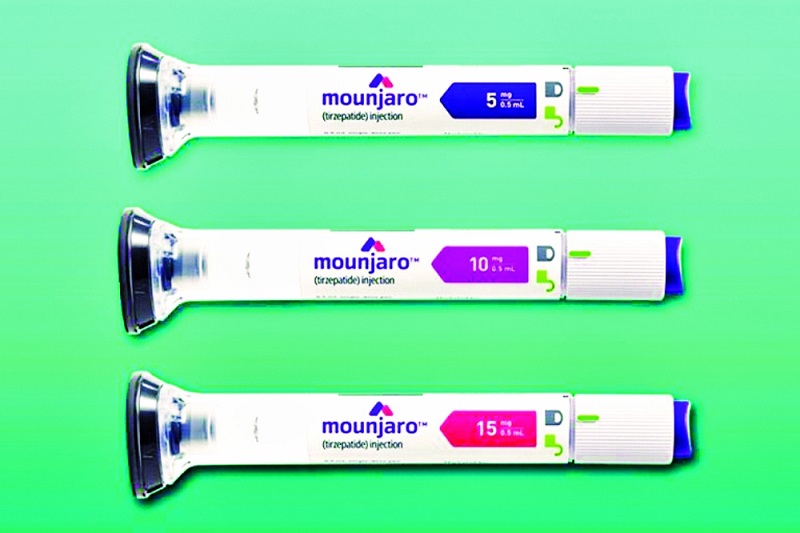Mounjaro Injection in Dubai is a medication developed to help regulate blood sugar levels and support weight loss in individuals with type 2 diabetes or obesity. It works by mimicking two important hormones, GLP-1 and GIP, which play a role in insulin secretion, appetite regulation, and slowing gastric emptying. These combined effects help control blood sugar and reduce caloric intake by promoting feelings of fullness. Understanding how Mounjaro functions is key to determining the most effective time for administration, as timing may enhance or diminish its therapeutic effects.
Weekly Dosing Routine and Flexibility:
Mounjaro (منجارو) is a once-weekly injection, offering users flexibility in choosing the day and time that works best for their lifestyle. However, consistency is crucial—administering the injection at the same time on the same day each week helps maintain steady levels of the medication in the body. While the label does not specify an exact best time of day for injection, many users find it helpful to align the dosing time with their weekly schedule. For example, some prefer weekends for convenience, while others choose early weekday mornings to manage potential side effects.
Morning vs. Evening: When Is Better?
Taking Mounjaro in the morning or evening depends on how your body reacts to the medication. Some individuals prefer mornings because any side effects—like nausea or fatigue—can be managed throughout the day. Morning dosing also allows for greater control over food intake and hydration. Conversely, others find evening injections more beneficial, especially if they experience drowsiness after taking it. Evening dosing may allow you to sleep through side effects, although it could also disrupt sleep for sensitive individuals. Testing both times during initial weeks can help determine your optimal schedule.
Managing Side Effects Through Timing:
One of the main considerations for when to take Mounjaro is how to best manage side effects like nausea, stomach discomfort, or decreased appetite. These symptoms are often more pronounced shortly after injection, especially during the initial weeks or when increasing the dose. For individuals who experience significant nausea, taking the injection before a period of rest—such as in the evening—may help. Others may benefit from taking the injection before a light meal in the morning, allowing food to settle the stomach and minimize discomfort. Tracking your side effects in a journal can help refine the best time for you.
Aligning Mounjaro with Meal Times:
Though Mounjaro doesn’t need to be taken with food, some people find their digestive side effects are easier to manage when the injection is aligned with their eating patterns. Taking Mounjaro shortly before a meal, especially breakfast or lunch, can aid in controlling appetite and help avoid overeating. The appetite-suppressing effects of Mounjaro might be most useful during the day when food temptations and larger meals are more common. However, since everyone’s routine and metabolism differ, it’s useful to observe how your hunger and energy levels shift depending on your dosing time.
Weekly Routine for Consistency:
Developing a weekly routine around your Mounjaro injection can maximize its benefits and simplify adherence. Choose a consistent day and set a reminder to stay on track. Incorporate your injection into a relaxing part of your routine, such as after a morning shower or before your evening wind-down. Keeping a consistent log of your injection schedule, food intake, hydration, and physical activity can help you notice patterns, such as which days you feel most energetic or which meals are easier to manage. Over time, this routine builds a rhythm that supports better outcomes.
Special Considerations: Travel, Stress, and Sleep
When traveling or dealing with schedule disruptions, maintaining your weekly injection schedule can be challenging. Plan ahead by adjusting your injection time gradually if crossing time zones. For example, shift the dose by a few hours each day to align with your destination. Stress and sleep also influence how your body responds to medications like Mounjaro. In times of increased stress, consider administering your dose during periods when you can relax and recover, such as a quiet morning or a restful evening. Ensuring good hydration and sleep on injection days also helps mitigate side effects.
Listening to Your Body for Optimal Timing:
Ultimately, the best time to take Mounjaro depends on your individual response. Track how you feel after each injection, especially regarding appetite control, energy levels, digestive comfort, and sleep quality. Over several weeks, patterns will emerge that help you pinpoint your optimal timing. Whether it’s a calm Sunday morning or a quiet Thursday evening, the key is consistency and mindfulness. Listening to your body, adjusting as needed, and staying committed to your routine will yield the best long-term results from your Mounjaro treatment journey.
Conclusion:
Choosing the best time to take Mounjaro (مانجارو) can significantly influence how well the medication works for you. While there’s no universal “perfect time,” consistency, awareness of side effects, and alignment with your lifestyle are key factors. Whether you prefer mornings to stay alert and manage appetite throughout the day or evenings to minimize discomfort while you sleep, the most effective schedule is one that fits seamlessly into your routine. By tracking your body’s responses, staying hydrated, and keeping a steady routine, you can maximize the benefits of Mounjaro and support your long-term health and wellness goals.







0 Comments